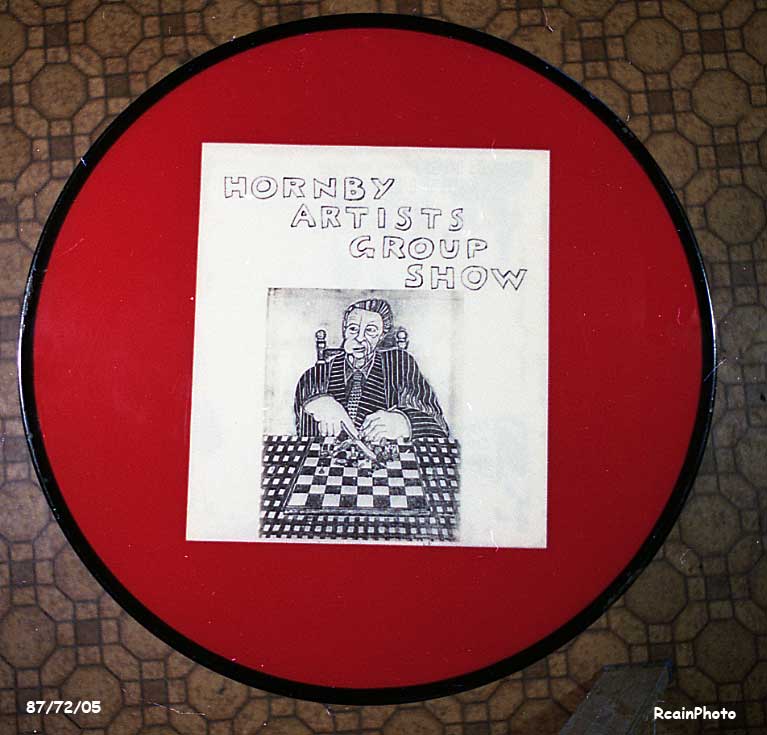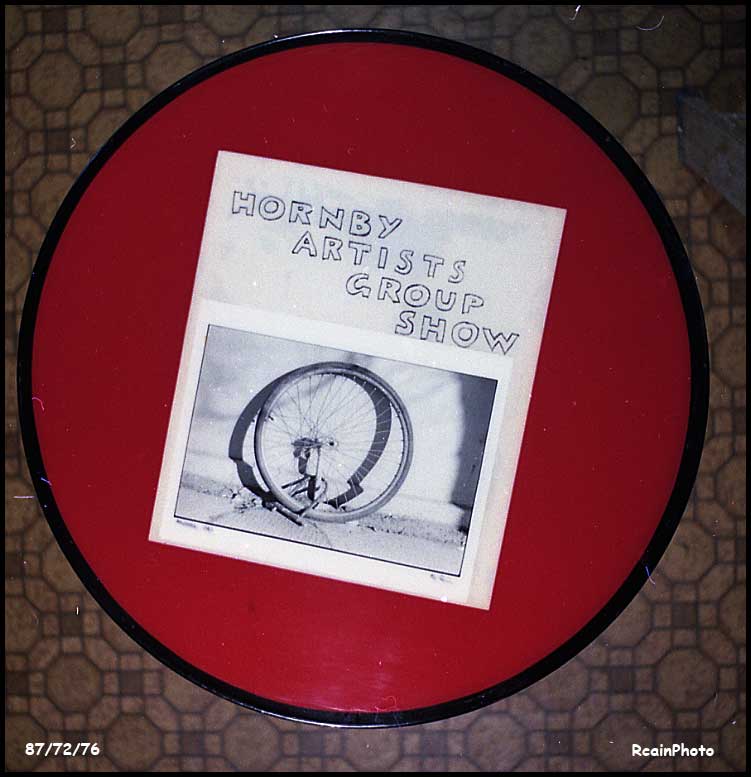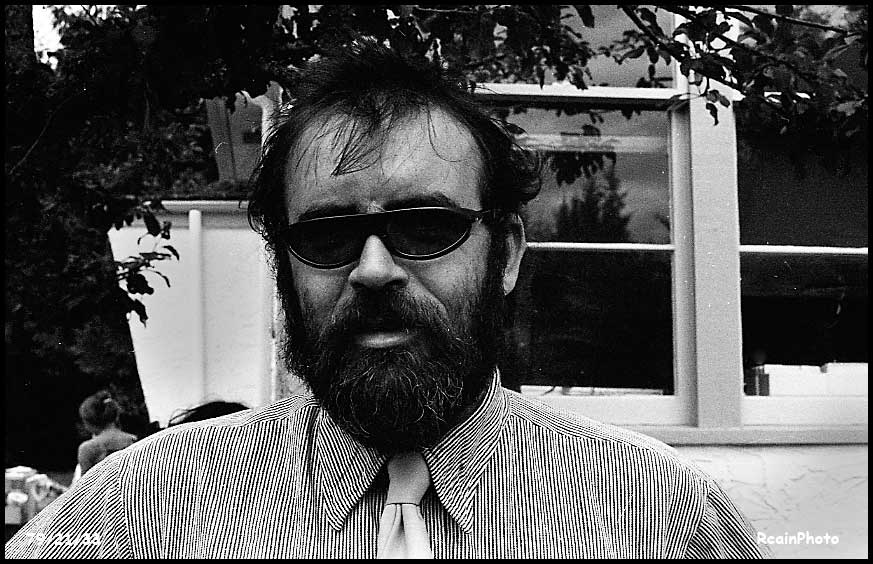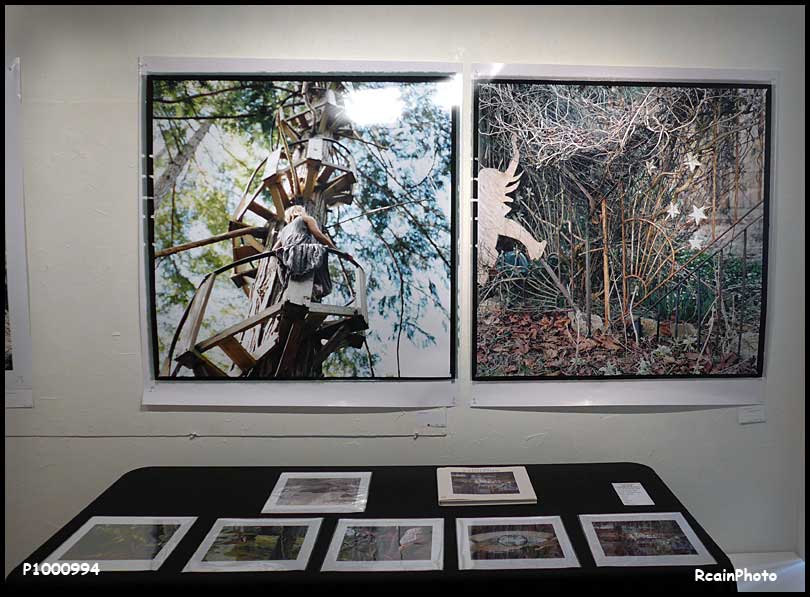
Category Archives: Artists
Thatch Table

The Thatch owners decided to jazz up their tables. Invited a group of Hornby artists to ‘do’ a table. This one was mine. Taken in Montreal.
Poet

Billy Little/1979
The Tree

Melisa Moore’s show at the Arts Centre. Yes, that’s my tree.